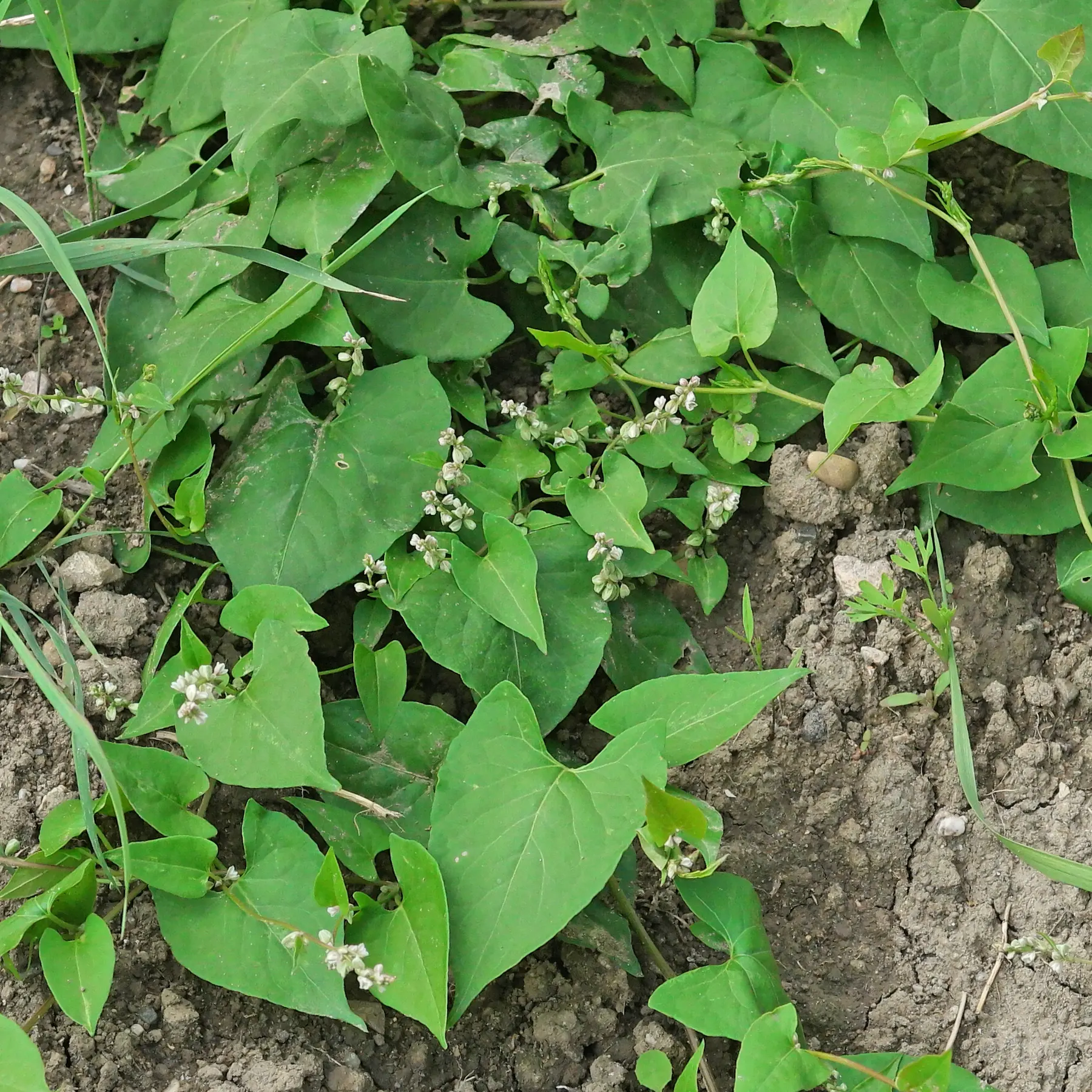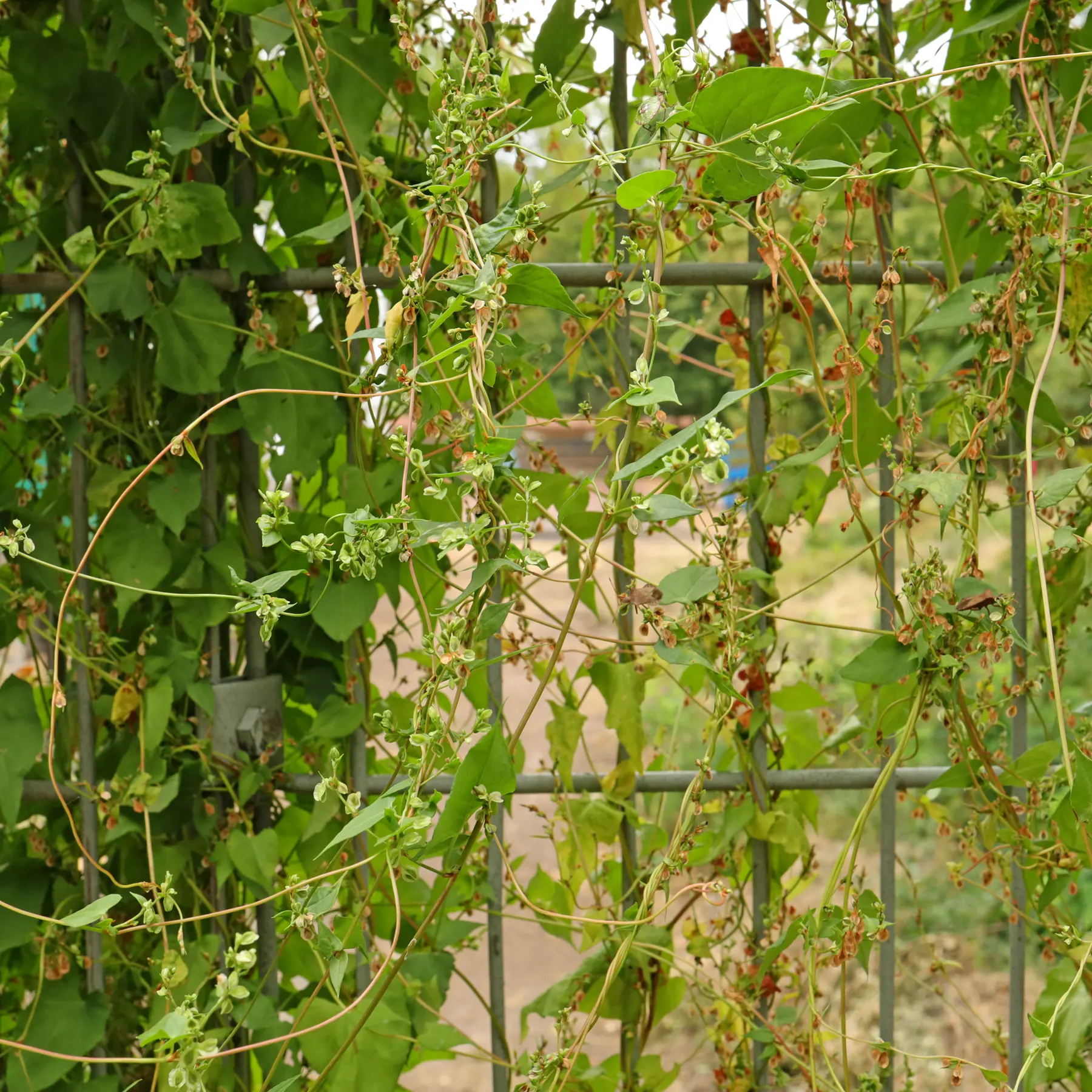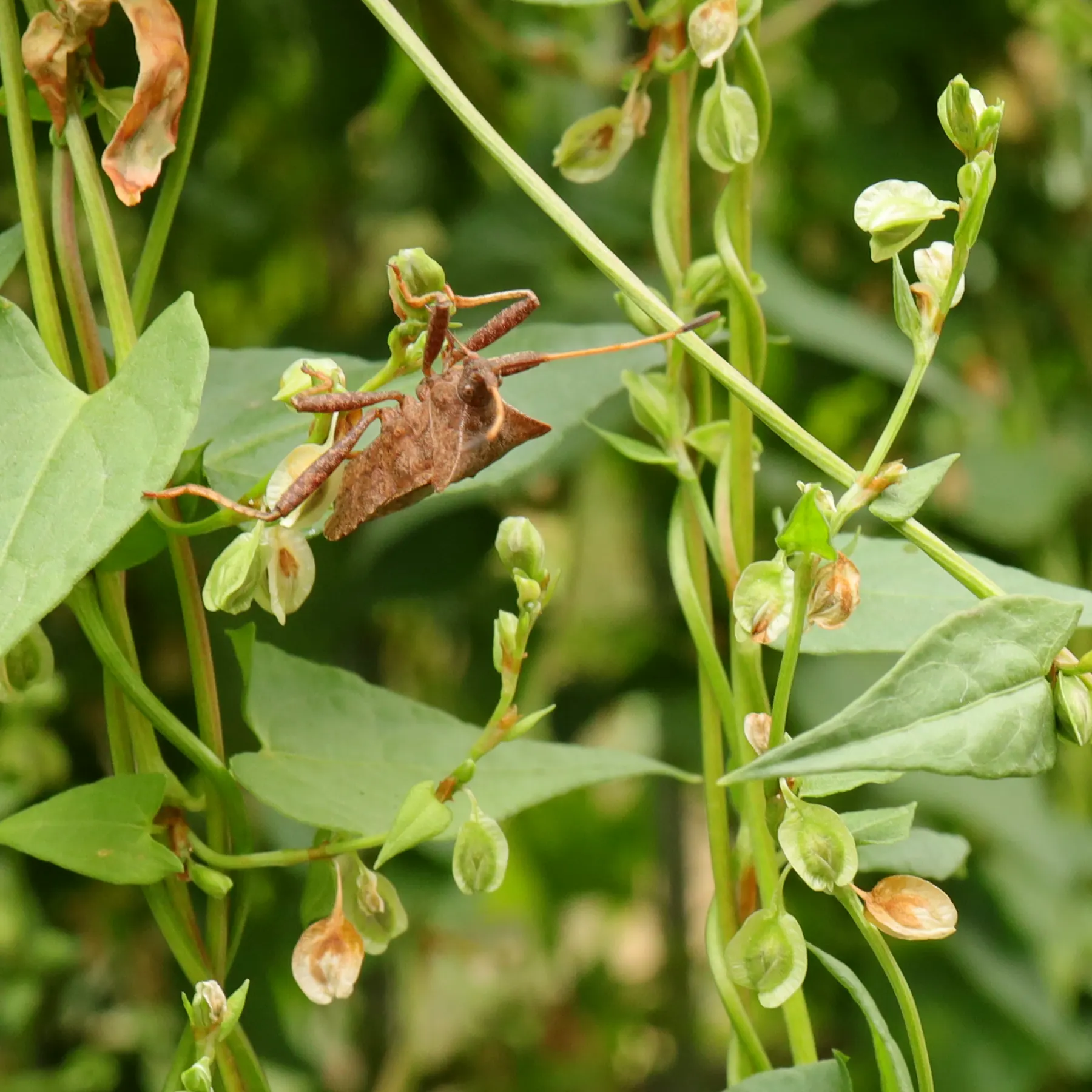Fallopia convolvulus is closely related to Buckweed and Rhubarb, it belongs to the Knotweed family. Some of its popular names are Black-Bindweed, Wild Buckwheat, Climbing Buckwheat, Climbing Bindweed and Corn-Bind.

Where does Fallopia convolvulus come from?
Black Bindweed is native to North Africa, most of Europe and many Asian countries. In Asia, its range extends as far as India. As an introduced species, it is supposed to be found in other regions as well, in Australia, New Zealand, North America and South America (source).
How does Black-Bindweed grow?
Climbing or creeping with shoots that can reach up to two metres in length. Fallopia convolvulus grows as an annual, the seeds germinate in spring and the shoots dry out as soon as the next generation of seeds is ready.

Where does Black-Bindweed grow?
In urban areas, fences are mostly inhabited by two plants: Red Bryony and Black Bindweed.

Fallopia convolvulus, on the other hand, uses other climbing aids such as trees or shrubs. However, it can also do without and grow creeping.
It can also be found on embankments, in gardens, along roadsides, in fields, on building sites and in hedgerows.

Is Black Bindweed poisonous?
No, its leaves are supposed to be edible. But I have not tried them.
When does Fallopia convolvulus flower?
Fallopia convolvulus can start flowering in mid-May and last until October.

 Compact dock, thyrse sorrel
Compact dock, thyrse sorrel